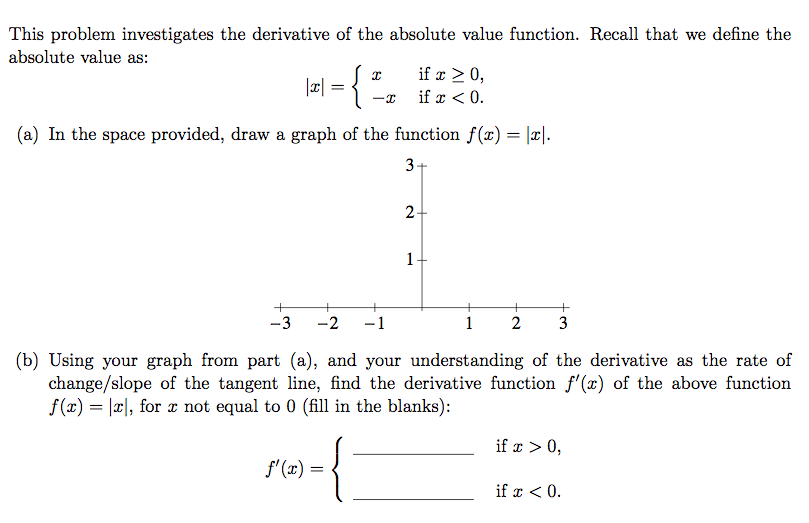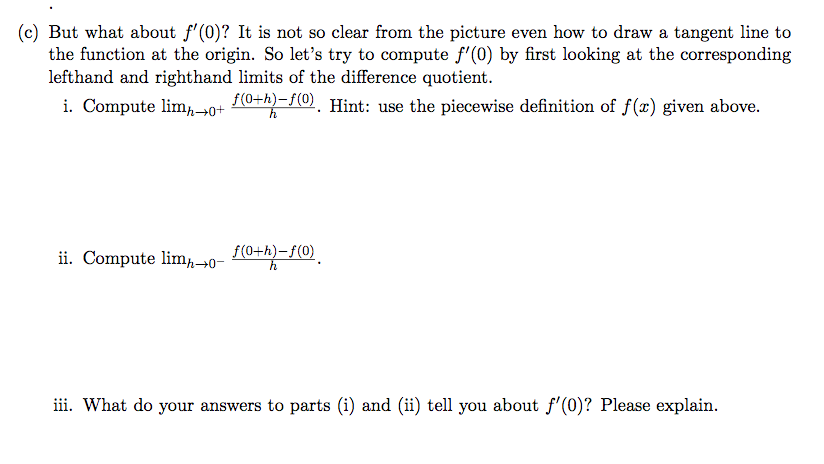Answered step by step
Verified Expert Solution
Question
1 Approved Answer
This problem investigates the derivative of the absolute value function. Recall that we define the absolute value as: |x| { (a) In the space


This problem investigates the derivative of the absolute value function. Recall that we define the absolute value as: |x| { (a) In the space provided, draw a graph of the function f(x) = |x|. 3- = x f'(x) = -I + -3 -2 1 if x 0, if x < 0. 2- 1. + 1 2 3 (b) Using your graph from part (a), and your understanding of the derivative as the rate of change/slope of the tangent line, find the derivative function f'(x) of the above function f(x)= x, for r not equal to 0 (fill in the blanks): if x > 0, if x < 0. (c) But what about f'(0)? It is not so clear from the picture even how to draw a tangent line to the function at the origin. So let's try to compute f'(0) by first looking at the corresponding lefthand and righthand limits of the difference quotient. i. Compute limh0+ f(0+h)-f(0). Hint: use the piecewise definition of f(x) given above. h ii. Compute limh0- (0+h)-f(0) iii. What do your answers to parts (i) and (ii) tell you about f'(0)? Please explain.
Step by Step Solution
★★★★★
3.33 Rating (153 Votes )
There are 3 Steps involved in it
Step: 1

Get Instant Access to Expert-Tailored Solutions
See step-by-step solutions with expert insights and AI powered tools for academic success
Step: 2

Step: 3

Ace Your Homework with AI
Get the answers you need in no time with our AI-driven, step-by-step assistance
Get Started


